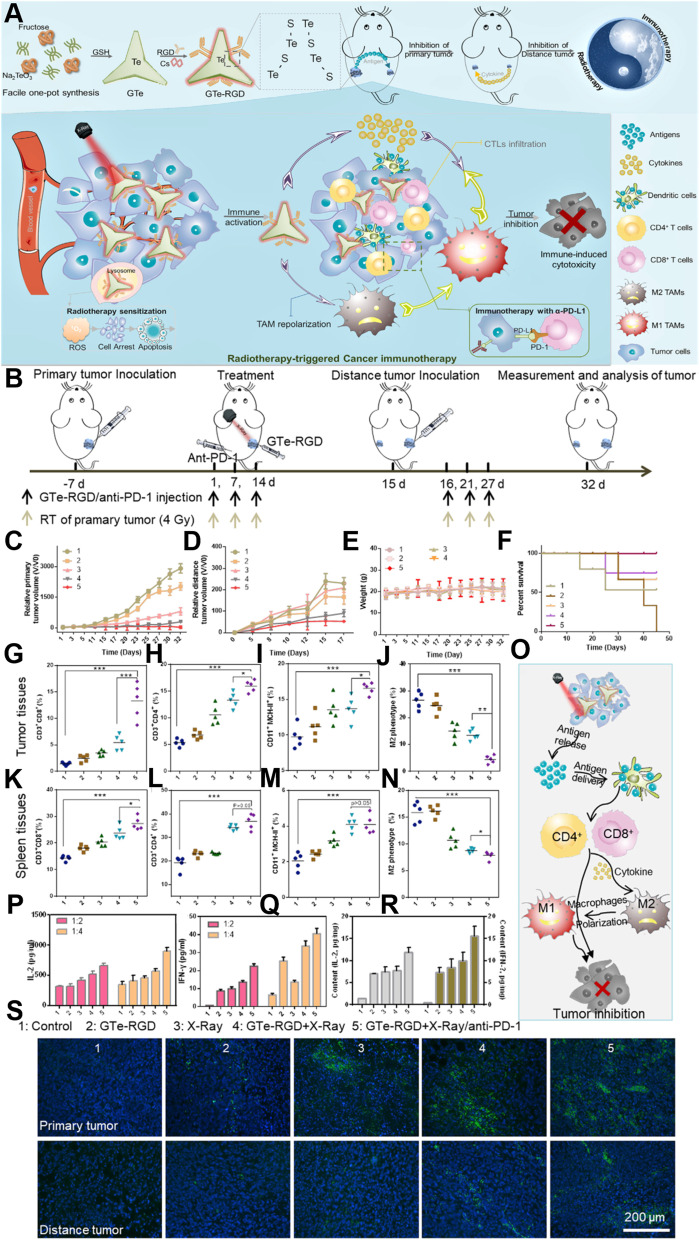Fig. 14.
A Schematic diagram shows the facile synthesis of triangle-shaped Te nanostar (GTe-RGD) and its combination with checkpoint blocking as an excellent radio sensitizer for boosting immunotherapy, which may provide reasonable evidence of the synergistic effect of RT and immunotherapy. (B-S) In Vivo GTe-RGD-Enhanced RT for Boosting Checkpoint Blockade Immunotherapy. B Schematic diagram of our experiments and the overall survival curves of mice with different treatments (experimental design to evaluate the enhanced cancer RT combined with anti-PD-1 using a bilateral subcutaneous 4 T1 tumor model). Tumors on the right legs were referred to as “primary tumors” and received X-ray treatment, while left tumors were called “distant tumors” and did not undergo RT. Average growth of (C) primary tumors and (D) distant tumors in mice receiving various treatments. E and F Body weight and overall Kaplan-Meier survival curves of 4 T1 tumor-bearing mice in different groups after various treatments. G and H–N Flow-cytometry analysis of immune cells including CD8+ T cells, CD4+ T cells, DCs, and M2 phenotype macrophages in tumor and spleen tissues (n = 5 per group). S Immunofluorescence analysis of CD8 antibody (green, CD8+ T cells) and DAPI (blue, cell nuclei) in primary and distant tumor tissues. (O) Mechanism of anticancer immune responses induced by GTe-RGD-based RT in combination with checkpoint blockade. P and Q Levels of IL-2 and IFN-g secreted by T lymphocytes stimulated with different proportions of dead cancer cells in different treatment groups. R Serum cytokine concentrations in mice after different treatments. All data are presented as mean G SD (n = 5). *p < 0.05, **p < 0.01, ***p < 0.001 [174]

